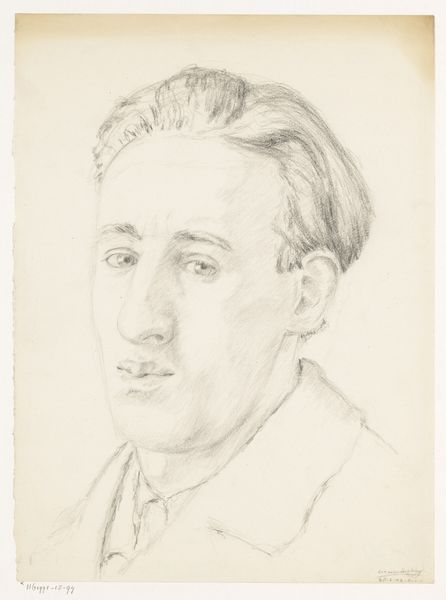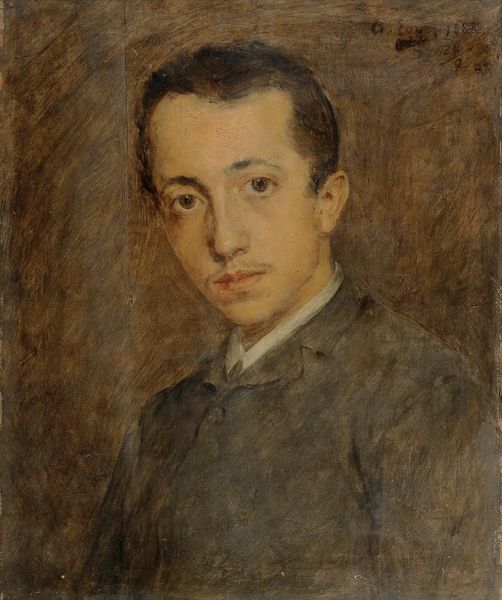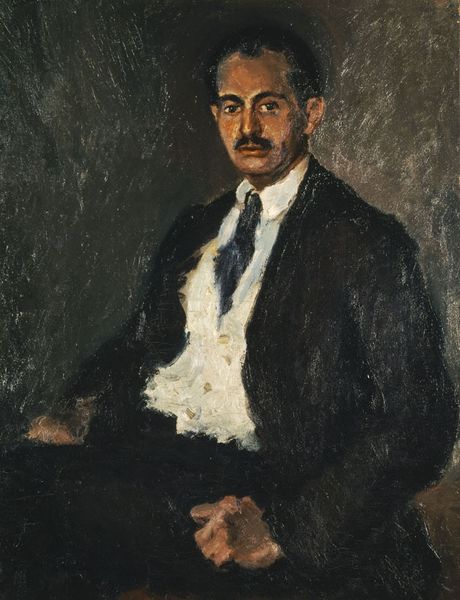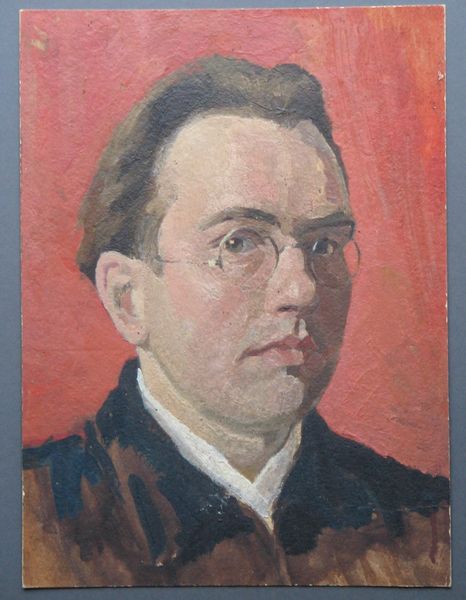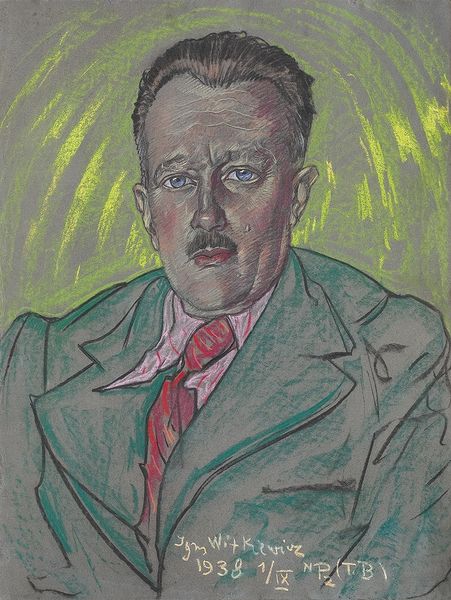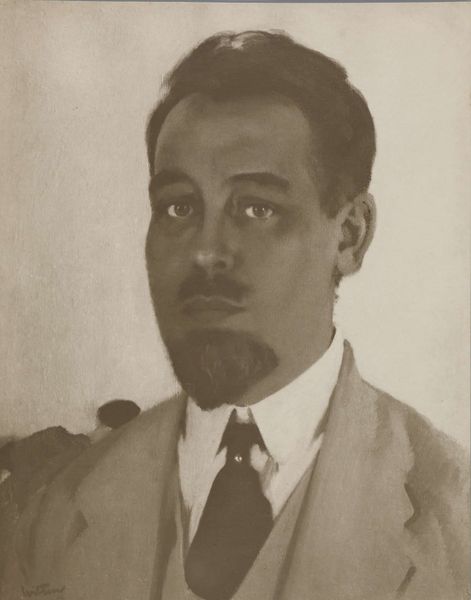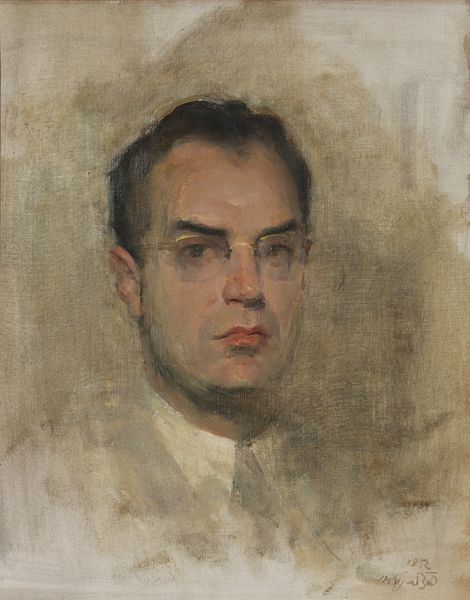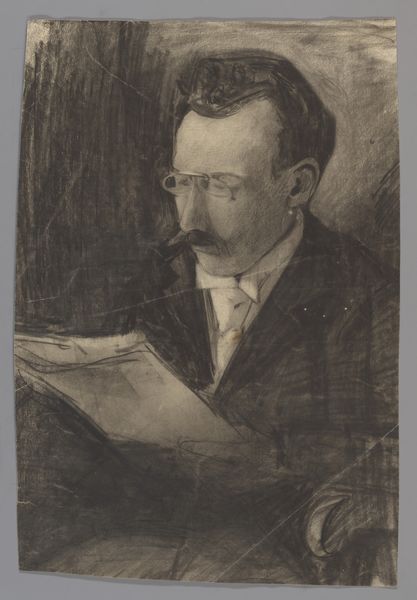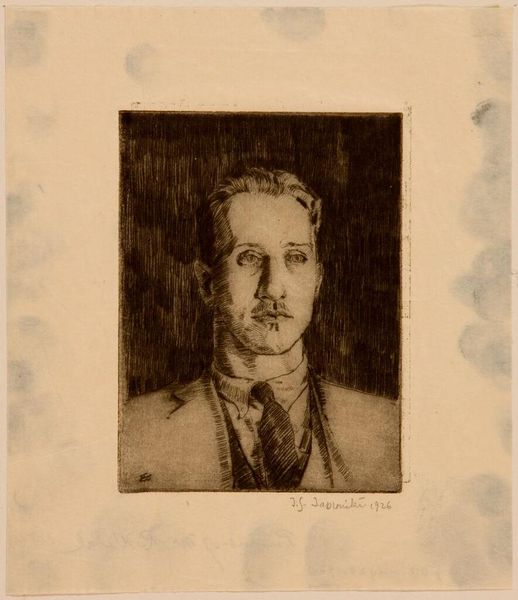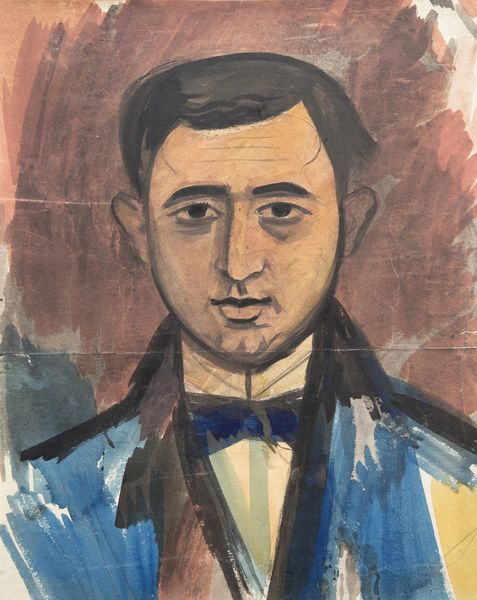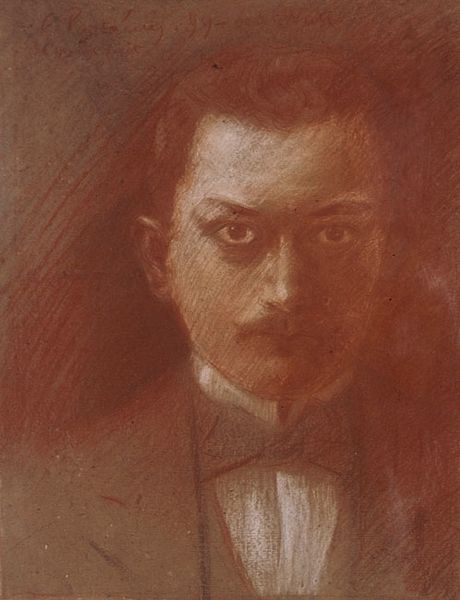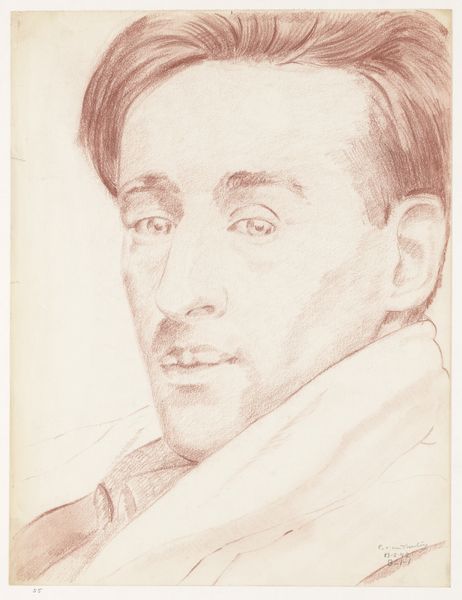
drawing, pastel
#
portrait
#
drawing
#
portrait subject
#
portrait reference
#
portrait head and shoulder
#
animal drawing portrait
#
portrait drawing
#
facial study
#
pastel
#
facial portrait
#
portrait art
#
fine art portrait
#
digital portrait
Dimensions: sheet: 32.86 × 25.72 cm (12 15/16 × 10 1/8 in.)
Copyright: National Gallery of Art: CC0 1.0
Curator: This is Lois Mailou Jones's 1943 pastel drawing, "Thurlow Evans Tibbs, Sr." Editor: My initial reaction is that it feels very intimate, almost like a personal sketch rather than a formal portrait. There’s a softness in the pastel strokes and a gentle light. Curator: It’s interesting you say that. Jones painted portraits of prominent figures, but also aimed to represent everyday African Americans with dignity and nuance during a period of widespread racial prejudice. Thurlow Tibbs was a prominent figure in the Harlem Renaissance. Editor: I see it now. It’s not just the man himself but the artistic rendering that invites connection. Notice how the colors aren’t blended perfectly but juxtaposed—blue near his temple, green above his head—creating depth without harsh lines. His eyeglasses offer also the effect of distancing and vulnerability at the same time. Curator: The looseness contributes to its accessibility, certainly. It stands in stark contrast to the often-stilted formal portraits of the era. The deliberate choice of pastel allowed Jones to depict her subject with a kind of empathetic realism, reflective of her commitment to portraying black individuals as complex, multifaceted human beings, rather than stereotypes. It challenges the prevailing racist imagery. Editor: Absolutely, and technically it works. See how the muted palette emphasizes the subject's features? The soft, diffused light flatters him, yet allows for imperfections, such as freckles, adding to the honesty of the portrayal. The gaze is steady, but his expression suggests intelligence and depth. Curator: Jones's choice to focus on individual dignity helped break down societal barriers. She worked within a framework dominated by white cultural institutions, yet consistently championed Black subjects and narratives, paving the way for future generations of Black artists. Editor: Thinking about that, even the subtle disjunction of color functions almost like an expressive code. There’s a kind of liveliness and quiet resolve in his eyes. I agree—far removed from mere documentation; this drawing operates within and against its socio-historical moment. Curator: It certainly does, underscoring the personal within the political. Editor: Agreed. This image has helped to unpack layers of formal and informal engagement in portraiture, creating an artwork of nuance and openness.
Comments
No comments
Be the first to comment and join the conversation on the ultimate creative platform.
